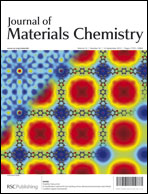How to get superhard MnB2: a first-principles study
Abstract
In 2009, a super-hard MnB2 with ReB2-type structure was predicted as being in the ground state. However, it has not been synthesized successfully in about two years either by high temperature and high pressure (HTHP) method or by the arc-melting method. To obtain the accurate synthesis conditions, the P–T phase boundary between AlB2-type and ReB2-type MnB2 has been studied by first-principles lattice dynamics calculations within quasi-harmonic approximation (QHA). Our results show that the ReB2-type MnB2 can be synthesized only below 1020 K at ambient pressure. Pressure effect makes their transition temperature decrease. If the pressure is higher than 38 GPa, only AlB2-type MnB2 can be obtained. The synthesis temperatures of previous experiments (either HTHP or arc-melting method) are all above 1020 K, so that only AlB2-type MnB2 can be synthesized. Therefore, it is essential to control the temperature accurately to synthesize the ReB2-type MnB2. On the other hand, the pressure should be controlled to be as low as possible. Further analyses show that the thermodynamic stability of MnB2 at high temperature mostly depends on the vibration frequency of Mn atoms. The stronger interactions between Mn and B in the ReB2-type MnB2 induce the vibration frequencies of Mn atoms shift to higher and increase the Gibbs free energy, causing the thermodynamics instability of ReB2-type MnB2 at high temperature. Therefore, there is no ReB2-type MnB2 synthesized at the temperature higher than 1020 K.


 Please wait while we load your content...
Please wait while we load your content...